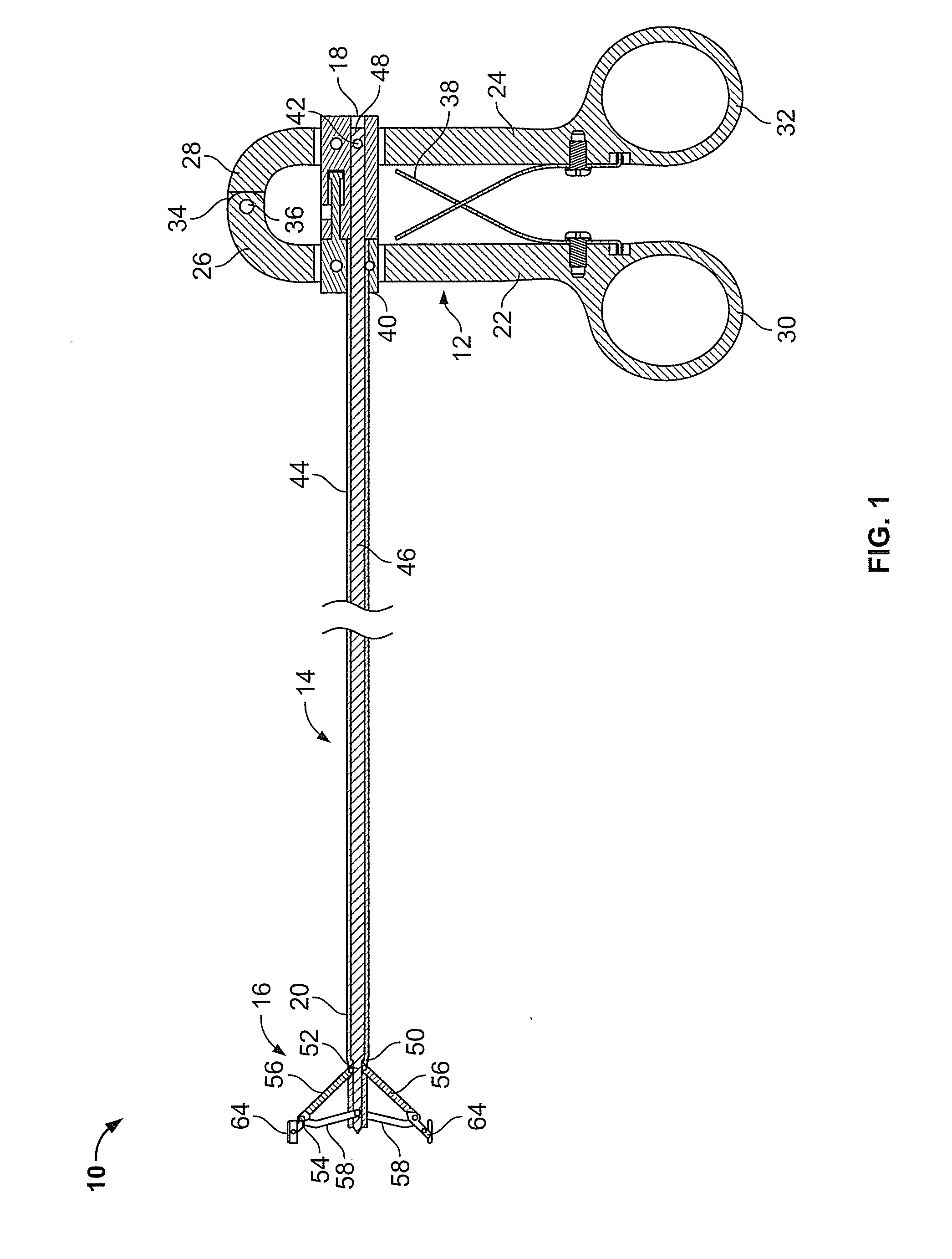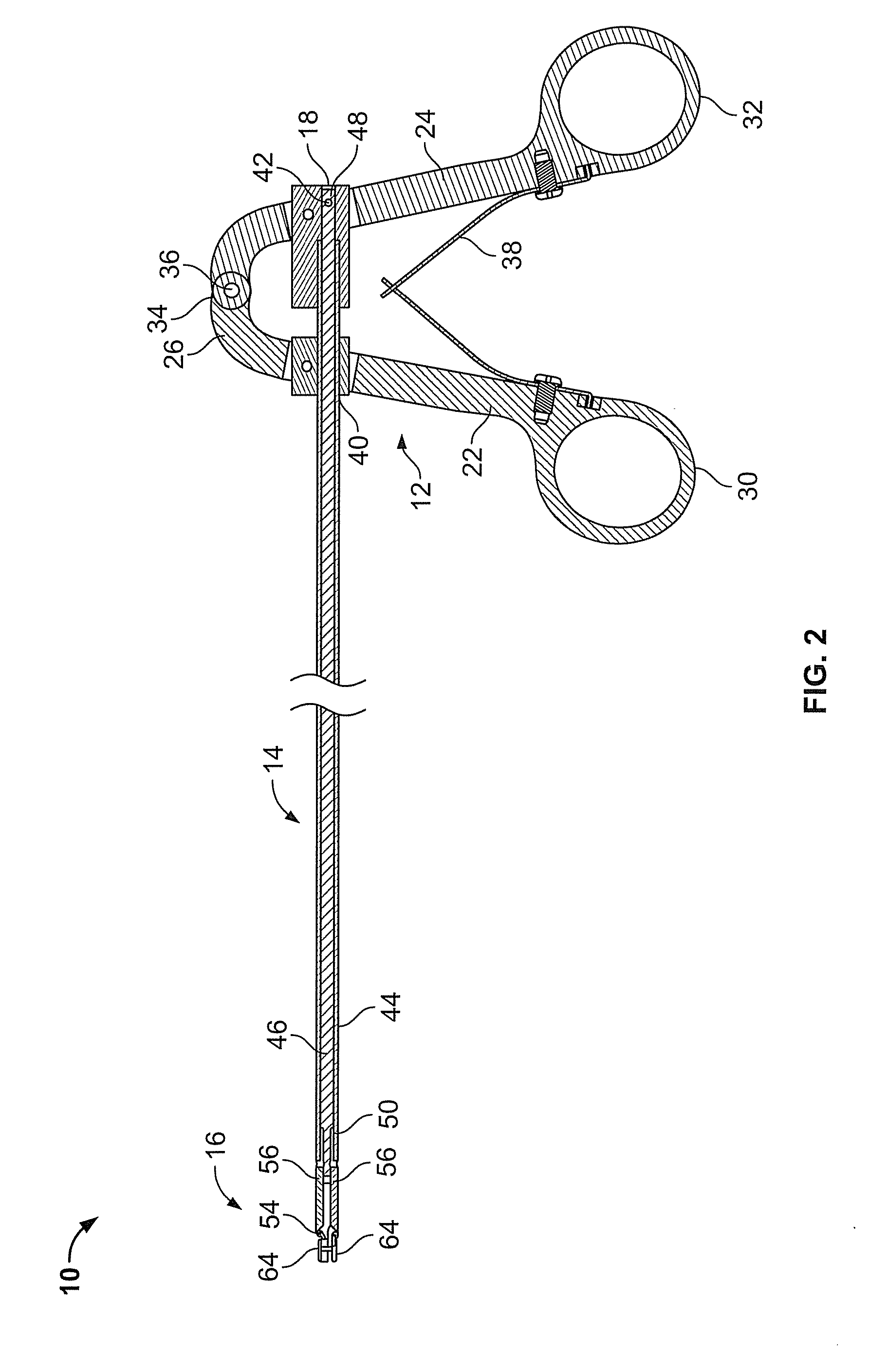Minimally invasive bone manipulation device and method of use
a bone retraction and minimally invasive technology, applied in the field of surgical instruments, can solve the problems of undesirable expansion of bone or bone fragments, unsuitable retraction of tissue in a different type of surgery, and increase the challenge of surgeons, so as to avoid undesirable contact with surrounding tissue and bone, and less invasive
- Summary
- Abstract
- Description
- Claims
- Application Information
AI Technical Summary
Benefits of technology
Problems solved by technology
Method used
Image
Examples
Embodiment Construction
[0024] The following description is merely exemplary in nature and is not intended to limit the present disclosure, application, or uses.
[0025] The apparatus and method of the present teachings can be adapted for use in a variety of surgical procedures which require precise tissue manipulation by a surgeon. The following description and associated FIGS. 1-11C are provided as non-limiting examples of the present teachings, which is defined with particularity only by the claims of the present teachings.
[0026] As shown in FIGS. 1-10, a tissue manipulation device (10) is provided. In one aspect, the device is configured to be particularly well-suited to the manipulation of bone in a subject. By way of example, the device (10), as best shown in FIGS. 1-9, includes three portions or assemblies which can be integrally formed or separately fabricated prior to being joined to form the device (10).
[0027] The three assemblies, which together form the device (10), include a handle assembly (...
PUM
 Login to View More
Login to View More Abstract
Description
Claims
Application Information
 Login to View More
Login to View More - R&D
- Intellectual Property
- Life Sciences
- Materials
- Tech Scout
- Unparalleled Data Quality
- Higher Quality Content
- 60% Fewer Hallucinations
Browse by: Latest US Patents, China's latest patents, Technical Efficacy Thesaurus, Application Domain, Technology Topic, Popular Technical Reports.
© 2025 PatSnap. All rights reserved.Legal|Privacy policy|Modern Slavery Act Transparency Statement|Sitemap|About US| Contact US: help@patsnap.com



